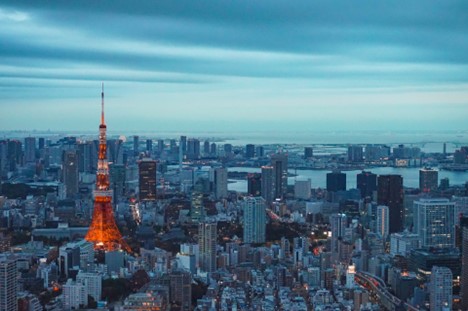
- ARAB NEWS
- 31 Jul 2025

Nader Sammouri
OSAKA: One of the cultural instabilities in Japan comes mainly from earthquakes. As for several areas in the Middle East, one of their main sources of instability comes from fear of explosions. Between natural-made errors and human-made errors, how do both cultures face these factors, and have those become a norm?
“Only the tsunami alarm makes me nervous. Japan has always had updates on the activity of volcanos, so if I go hiking nearby an active volcano, I do check them. But I think people here are generally used to natural disasters. There is nothing special about it,” said Yukie Shigeta, a medical interpreter and office administrator at Nagano Red Cross.
Surprisingly, minor incidents, whether an earthquake in Japan or an explosion in the Middle East, if minor, are taken somewhat lightly, relatively speaking. Locals often perceive them as a norm. When a minor earthquake strikes in Japan, people proceed with their work ordinarily and may not react
to anything below a magnitude of four. Similarly, when a minor explosion occurs in Syria or Lebanon, people carry on and may casually run towards the site right after the incident.
“Among natural disasters, earthquakes are the standard environment in Japan. Japanese people are used to earthquakes with a seismic intensity of two to three,” said Maki Nakahara, who is a youth volunteer at Tokyo Red Cross and UNICEF. “So, I think that they can deal with earthquakes calmly without panicking most of the time.
Japan and earthquakes go hand in hand since the country is located on the most active earthquake belt in the world, the Pacific Ring of Fire. Due to that, Japan experiences over a thousand minor tremors yearly. As a result of this surprisingly frequent matter, earthquakes have become a norm in the country.
“When the earthquake alarm goes on, I usually turn off any fire source at first, then open the door to secure the entrance, and dive under the desk. On March 16, when an earthquake occurred in Fukushima and Miyagi Prefectures, my sharehouse in Tokyo only had light objects falling off the shelves, and there were no injuries. I registered my safety confirmation on LINE’s application function and sent messages of comfort to my family and friends,” Nakahara added.
Japan still spends lots of time and energy on being prepared for earthquakes, much more than any other country. To certify that people from the Japanese community can protect themselves, drills are prepared by the government and the private sector in an attempt to minimize the loss of life and damage.
Japanese people are trained for earthquakes and know their way around them. Their reaction to it lies somewhere in between not caring at all, or if the shaking becomes alarming, taking post-training action. At the grocery store? They get out of the aisles. At the office? They dive under the desk (since protecting the head takes first priority). Walking on the street next to a wall or a glass panel, or close to a mountain slope? They move back. For the most part, they drop, cover, and hold on until the earthquake passes.
Does the weight of a recurring disaster inspire endurance?
Taking instructions from tragedy, some of the world’s strictest building standards have become enforced in Tokyo’s high rises. Since Tokyo is the capital, the political and economic center of the country, high-rises spread enormously and thus risk the potential damage caused by possible earthquakes. To counter that, many buildings have extremely deep foundations enabling them to sway more, in case of an earthquake. This causes less rigid resistance, which dissolves the shock. Furniture in offices is also many times anchored to the walls and ceilings so they won’t fall over.
Disasters are inevitable, but what can be known for sure is that they can inspire endurance and embed strength. Societies must learn from their past, and develop their present so that history won’t repeat itself. Whether it is an earthquake or an explosion, necessary measures need to be considered and developed.